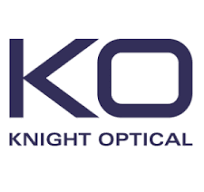The latest optics for imaging in 2025

Optics or lenses are an essential component of any imaging system (Credit: REDPIXEL.PL/Shutterstock.com)
Optics or lenses are an essential component of any imaging system in order to focus the image of the examined object onto the camera sensor. They can be used to remove parallax or perspective error, or provide adjustable magnifications, field of views, or focal lengths.
What are optics for imaging?
Made from transparent materials, such as glass or plastic, lenses can either converge (convex) or diverge (concave) light rays to create real or virtual images. These lenses are often combined in optical systems to enhance image quality, correct distortions, and adjust the field of view. Imaging involves capturing light rays from an object and directing them to form a visual representation on a surface, such as a camera sensor or the human retina. These optics are crucial in applications ranging from everyday devices like smartphones to specialised tools like telescopes and medical imaging devices, enabling accurate and detailed visual representations across numerous fields.
What are the applications for optics for imaging?
Lenses continue to evolve in order to be able to accommodate the changing needs of imaging systems for a variety of applications and use cases, with consumer electronics driving demand for video capture. Other important markets include automotive, medical, security and manufacturing, with sensors being developed in different sizes and designs.

Knight Optical - optics for imaging
Optical components have a vital role in imaging systems and are utilised in technologies in sectors such as automation, machine vision, medical imaging, and aerospace. From infrared aspheric lenses used in thermal imaging systems, to optical bandpass filters used in fluorescence microscopy to transmit the desired wavelength to the image sensor. Knight Optical works with substrates from UV through to infrared such as calcium fluoride, sapphire, optical glass, zinc selenide, and germanium, and can apply thin-film coatings, including high LDT, to the optical components to enhance the transmission and reduce any unwanted reflections.
Popular imaging optics available at Knight Optical either off-the-shelf or bespoke include:
- Lenses
- Filters
- Prisms
- Mirrors
- Optical assemblies
Knight Optical works closely with its partners to provide precision, metrology-tested optics, with guaranteed suitability for their intended purpose. Find out more.
SPONSORED BY

What are the biggest opportunities for optics for imaging?
This demand is driving growth in the lens market, according to the latest figures from market intelligence and advisory firm, Mordor Intelligence, which cited the value of the global camera lens market at $6.25 billion in 2025. This is expected to reach $8.57 billion by 2030, growing at a CAGR of 6.5% during the forecast period (2025-2030).
The report, Camera Lens Market Analysis - Growth Trends & Forecasts (2025 - 2030), highlighted that the integration of artificial intelligence (AI) and computational photography has been integral in this market evolution.
One of the biggest drivers is the continued advancement in smartphone camera technology, with manufacturers incorporating AI algorithms for enhanced image quality and real-time optimisation. Professional-grade camera integration in smartphones continues to grow, with recent innovations including periscope zoom technology and sophisticated multi-lens systems. These advancements have increased demand for high-quality smartphone camera lenses, driven by consumers' growing emphasis on photography features. A recent study revealed that 64% of professional photographers now use smartphones for more than half of their photographs, with the rising demand for visual content on social media platforms further fuelling this trend.
Camera lenses additionally play a crucial role in autonomous vehicles, says the report, where they provide 360-degree views for obstacle detection and navigation through advanced driver-assistance systems (ADAS), another significant driver for market growth. With autonomous vehicles projected to account for about 12% of car registrations by 2030, this demand is particularly strong in regions with major manufacturing hubs, supported by the automotive sector's increasing focus on safety applications.
However, the report also notes that the camera lens market faces its share of challenges, including the complexities of designing and fabricating advanced lens elements, maintaining optical quality with AI integration, and managing production costs at scale. Despite these challenges, the market remains highly fragmented, with leading players driving growth through strategic investments, partnerships, and innovative product launches in emerging technologies like liquid lens systems and retractable lens technologies.
Optics for imaging on the market now
Vendors that offer lens technology include camera manufacturer Basler, which has its own range of standard and premium lenses. The standard product line is designed for fast cameras with a lower resolution. It has a good price/performance ratio, with lenses priced to correspond to the requirements of many cost-sensitive applications. The premium product line is available for more demanding applications, and the lenses offer high resolution, low distortion and low vignetting.
IDS is another example of a camera manufacturer offering its own lens line. The company’s C-mount lens series provides resolutions of 5, 8 and 10 megapixels, as well as focal lengths of 4 to 75mm and different optical classes. The lenses cover sensor sizes from ½-inch to 1.1-inch. The aperture and focus can be fixed mechanically if required, which ensures brightness and image quality remain constant, even if the lens is exposed to vibration.
Available from Edmund Optics is a range of imaging lenses for a variety of imaging needs, including telecentric lenses, liquid lenses, those with fixed focal length, zoom lenses, and shortwave infrared imaging lenses. A selection of imaging lens accessories is also available, including filters, and mounts or adapters for additional functionality.
Fujifilm offers a wide range of prime, zoom and telephoto lenses. Its most recent launch is the Fujinon GF35-70mm interchangeable lens for large-format cameras. Designed as a compact and lightweight zoom lens, it weighs around 390g, with a focal length range covering from 35mm to 70mm. The company expects the portable form factor to help broaden the scope of applications for GFX camera systems, equipped with a large format sensor.
Kowa lenses have been used for applications in a wide range of industries such as automotive, logistics, pharmaceutical and food. They perform tasks such as defect detection, surface inspection or shape and dimensional inspection.
Optotune’s focus-tunable liquid lenses are designed to provide a versatile, compact and cost-effective solution to the challenge of keeping products in focus under the camera or quickly scanning various objects at different distances. Thanks to the absence of translational mechanics, these lenses can focus within a few milliseconds, ensuring robustness and reliability with a lifetime of billions of cycles for use in applications such as quality control, packet sorting, box filling, palletising, barcode reading, robot vision and 3D image stacking.
Resolve Optics offers compact fixed and zoom lenses for vision applications including parts recognition, precise component placement, automated alignment and placement, and automated inspection of manufactured components. The company recently reported on its development of radiation-resistant optical modules and lenses for use in satellite camera systems or inspection cameras designed for use in nuclear reactors. Standard optical materials increasingly suffer from radiation ‘browning’ – meaning that image quality will deteriorate over time.
A recent addition from Schneider-Kreuznach to its range of Zirconia lenses is the Zirconia 3.3/90. Designed for line sensors, it has a common magnification 0.1x. The main fields of application are flat panel display and PCB inspection. It has a uniform imaging performance over the whole field of view and, like other products in the Zirconia series, it comes with a V48 mount.
Sill Optics provides a range of telecentric lenses for machine vision applications. The company offers products that include lenses with coaxial light coupling to entocentric macro and wide-angle lenses, and telecentric illumination. Recent additions include the S5VPJ0303 and S5VPJ0305 telephoto lenses, including a tunable liquid lens. They offer high-speed adjustment of focal length to compensate for working distance deviation.
Thorlabs offers a wide variety of C-mount camera lenses for machine vision, including standard fixed lenses, zoom lenses, high-magnification zoom lenses for macro applications, modular zoom lens components, and telecentric lenses. These lenses are compatible with all of the company’s CCD and CMOS cameras. Thermal imaging lenses are available to focus infrared light without introducing spherical aberration, and the company can provide objective, scan, and tube lenses for use in constructing optical systems for machine vision applications.
Among its most recent developments in lenses, Tamron expanded its range of fixed focal length lenses for the machine vision market with the MA23 and MA111-VIR series. The MA23 series targets industrial inspection requirements with its small size and image quality optimised for shorter distances. The MA111-VIR series is optimised for larger sensor sizes and resolutions, with 1.1-inch sensor format and up to 24-megapixel resolution, addressing a large field of industrial and non-industrial high-resolution applications.
This is not an exhaustive list. If you provide optics or lenses for imaging and would like your company to be included, please let us know at: editor.electro@europascience.com

